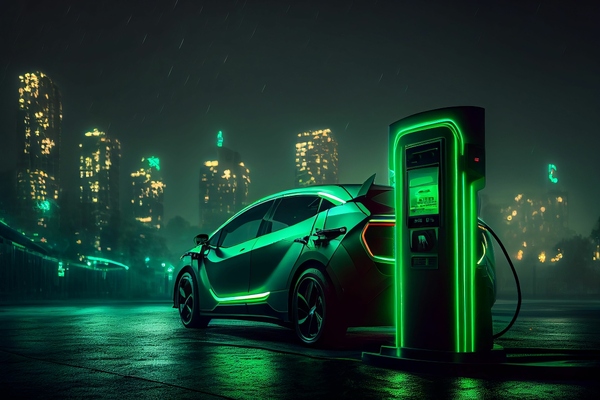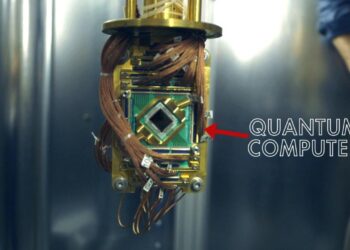The Intelligence Revolution: Electric Vehicles Get Smarter
The automotive industry is undergoing its most profound transformation in a century. It is not merely a shift from internal combustion engines (ICE) to Electric Vehicles (EVs), but a leap toward intelligent, connected, and autonomous mobility. The new generation of vehicles is defined by software, data, and machine learning, firmly establishing that EVs Evolve: The Future of Smart Mobility is already upon us.
The core breakthrough is the integration of advanced Artificial Intelligence (AI) and ubiquitous connectivity. EVs are essentially computers on wheels, capable of learning driver habits, optimizing routes based on real-time energy consumption, and communicating with surrounding infrastructure and other vehicles. This intelligence enhances everything from safety and performance to energy efficiency and the overall ownership experience.
This detailed exploration dives into the intricate technologies that make modern EVs “smart”: the sophisticated battery management systems, the rise of Over-The-Air (OTA) updates, the advanced driver-assistance features, and the profound impact of vehicle-to-everything (V2X) communication. Understanding these interconnected systems is vital for anyone tracking the future of transportation and the high-value potential of this burgeoning market.
The Core Intelligence – AI and Software Defined Vehicles (SDV)
The intelligence of an EV is rooted in its software, transforming a simple machine into a powerful, adaptable platform.
1. The Brain of the EV: Centralized Computing Architecture
Unlike older cars that relied on dozens of separate Electronic Control Units (ECUs) for individual functions, modern EVs use a centralized, domain-based computing architecture.
- High-Performance Centralized Computers (HPC): These vehicles utilize one or a few powerful High-Performance Computers (HPCs) to manage all critical systems, including infotainment, driver assistance, and power management. This integration simplifies software development and enables seamless data sharing between functions.
- Over-The-Air (OTA) Updates: The ability to update vehicle software remotely (OTA updates) is a cornerstone of the Smart EV. OTA updates fix bugs, enhance performance, improve battery range, and even add entirely new features—allowing the vehicle to literally get better over time without visiting a dealership.
- Predictive Maintenance: AI continuously monitors thousands of data points from sensors within the vehicle. Machine learning algorithms analyze this data to predict when a component (e.g., brakes, battery cells) is likely to fail, notifying the driver before an issue occurs, thereby reducing costly breakdowns and downtime.
2. AI for Personalized Driving Experience
AI goes beyond core functions to personalize the experience for the driver and passengers.
- Driver Habit Learning: The AI tracks acceleration, braking patterns, and preferred routing. It uses this data to provide highly accurate real-time predictions of remaining range and to tailor energy regeneration settings for maximum efficiency based on the driver’s style.
- Adaptive Infotainment: The infotainment system uses AI to learn media preferences, optimize climate control based on passenger comfort history, and personalize user interfaces, creating a seamless and bespoke in-cabin experience.
- Voice and Gesture Control: Advanced Natural Language Processing (NLP) allows drivers to control navigation, media, and vehicle settings using conversational voice commands. Gesture recognition systems offer intuitive, contact-free control over basic functions, minimizing distraction.
Power Management and Efficiency Optimization
The efficiency of an EV is paramount, and smart systems play the most crucial role in maximizing battery life and charging speed.
1. Advanced Battery Management Systems (BMS)
The Battery Management System (BMS) is the most critical component of a smart EV, responsible for safety, longevity, and efficiency.
- Cell-Level Monitoring and Optimization: Modern BMS monitors the voltage, temperature, and health of individual cells (often thousands) within the large battery pack. This micro-management ensures every cell operates within its optimal parameters, preventing overheating and maximizing the overall lifespan of the pack.
- Thermal Regulation Strategies: Smart cooling and heating loops are deployed to maintain the battery’s ideal temperature range, which is essential for performance during rapid acceleration and for enabling ultra-fast DC charging speeds without damage.
- Predictive Degradation Analysis: AI models track long-term charging and usage patterns to accurately predict the remaining capacity and degradation rate of the battery over many years, providing owners with reliable data on the resale value and longevity of their investment.
2. Intelligent Range and Route Optimization
Range anxiety is mitigated by systems that provide hyper-accurate predictions based on real-time data.
- Topography and Weather Integration: Navigation systems now integrate live data on road gradient (hills/elevation), traffic congestion, and real-time weather conditions (wind, temperature) to provide dynamic, adjusted range estimates that are far more accurate than simple, static predictions.
- Smart Charging Integration: The vehicle can communicate with charging networks to identify available, fastest, and most cost-effective charging stations along the route. It can also pre-condition the battery temperature before arrival at the charger to ensure optimal fast-charging efficiency.
- Regenerative Braking Optimization: AI controls the intensity of regenerative braking—the system that recovers energy when slowing down—adapting it based on road conditions, traffic flow, and remaining battery state-of-charge to maximize energy capture.
 Connectivity and Vehicle-to-Everything (V2X)
Connectivity and Vehicle-to-Everything (V2X)
Smart EVs are designed to be part of a vast, interconnected network, communicating with infrastructure, other cars, and the electrical grid.
1. Vehicle-to-Infrastructure (V2I) and V2V
This communication allows the car to talk to its environment for enhanced safety and efficiency.
- Traffic Signal Optimization: V2I allows the car to receive real-time information from traffic signals, informing the driver (or autonomous system) of the optimal speed to pass through a series of lights without stopping, saving energy and reducing congestion.
- Hazard Warnings and Collision Avoidance (V2V): Vehicle-to-Vehicle communication enables cars to instantly share data on hazardous conditions, sudden braking, or accidents ahead, allowing vehicles miles away to react before sensors can even detect the problem.
- Dynamic Parking Assistance: The car communicates with smart city infrastructure to find and reserve parking spaces, directing the driver to the exact spot and integrating payment, vastly reducing search time and fuel consumption in urban areas.
2. Vehicle-to-Grid (V2G) and Energy Management
The smart EV is evolving from a consumer to a key player in the energy ecosystem.
- Bidirectional Charging Capability: V2G systems enable the car battery to not only take power from the grid but also give power back during periods of peak demand. This transforms the parked EV into a decentralized energy storage unit, stabilizing the power grid.
- Optimized Home Charging: EVs intelligently schedule charging to occur exclusively during off-peak utility hours when electricity prices are lowest, minimizing the cost of ownership for the consumer.
- Home Power Backup (V2H): In the event of a power outage, the V2H (Vehicle-to-Home) feature allows the EV battery to power the owner’s home for several days, turning the car into a massive, mobile energy backup system.
The Autonomous and Safety Frontier
The foundation of a self-driving car is an intelligent, learning electric platform.
1. Advanced Driver-Assistance Systems (ADAS)
ADAS features are the stepping stones to full autonomy, utilizing arrays of sensors and sophisticated AI.
- A. Sensor Fusion: The car’s computer combines and interprets data from multiple sensors—LiDAR, radar, ultrasonic sensors, and cameras—to create a complete, redundant, and highly accurate 360-degree environmental model. This sensor fusion is crucial for safety, as no single sensor is perfect in all conditions.
- Intelligent Cruise Control and Lane Keeping: These systems use AI to maintain safe distances, execute smooth, human-like speed adjustments in traffic, and keep the vehicle centered in its lane, reducing driver fatigue on long journeys.
- Evasive Steering Assist: In emergency situations, the system can instantly calculate the optimal path to avoid a collision and provide precise steering input to the driver, potentially preventing accidents faster than a human can react.
2. The Shift Towards Full Autonomy (Levels 4 and 5)
The ultimate goal of Smart EVs is reliable, safe, unsupervised self-driving.
- A. Deep Learning Training: Autonomous driving systems are trained using massive datasets collected from fleets of real-world vehicles. This deep learning allows the AI to recognize and predict complex, chaotic, and rare events (e.g., unexpected pedestrian behavior, debris on the road).
- High-Definition (HD) Mapping: Autonomous systems rely on constantly updated, incredibly precise HD maps that include lane markings, street furniture, and road signs down to centimeter accuracy, providing crucial context that standard GPS cannot offer.
- Redundancy in Critical Systems: True autonomy requires redundancy—duplicate steering, braking, and power systems—to ensure that if one component fails, a backup can instantly take over, guaranteeing safety and reliability.
 Challenges and The Future Roadmap
Challenges and The Future Roadmap
The path to a fully smart, interconnected mobility system faces significant hurdles related to regulation, infrastructure, and ethics.
1. Regulatory and Ethical Challenges
The speed of technological advancement often outpaces the legal framework.
- Data Privacy and Ownership: Smart EVs generate massive amounts of personal data (location, driving style, in-cabin activity). Establishing strict international regulations for who owns, accesses, and uses this sensitive data is a critical ongoing debate.
- The “Trolley Problem” and Decision Ethics: Inevitably, autonomous vehicles will face unavoidable accident scenarios. The ethical framework programmed into the AI regarding whom to protect (e.g., passengers vs. pedestrians) must be transparent and legally sanctioned.
- Standardization of V2X Protocols: For V2X communication to be effective across different manufacturers and national infrastructures, universal standards and frequencies must be agreed upon and deployed globally, a massive undertaking.
2. The Next Wave of Smart EV Innovation
The future of smart mobility will focus on deeper integration with the user’s digital life and continuous innovation in vehicle architecture.
- Software as a Service (SaaS) Monetization: Manufacturers will increasingly monetize software features through subscriptions (e.g., advanced ADAS packages, faster acceleration, premium infotainment features), turning the vehicle into a recurring revenue platform.
- Integrated Wellness and Biometrics: Future EVs will integrate biometric sensors into the steering wheel and seats to monitor driver fatigue, stress levels, and health markers, autonomously adjusting cabin conditions or recommending a rest stop.
- Structural Battery Design: Integrating the battery pack directly into the vehicle’s structure (structural batteries) simplifies manufacturing, increases safety, and improves the vehicle’s overall range and weight distribution, marking the next physical evolution of the smart EV platform.
The transition to intelligent, connected EVs is not just an industry trend; it is a profound societal shift. By integrating sophisticated AI, robust software, and global connectivity, the car is evolving from a mere machine into a powerful, data-driven entity that promises to make transportation safer, cleaner, and ultimately, smarter. The future of mobility is electric, and its defining characteristic is intelligence.












